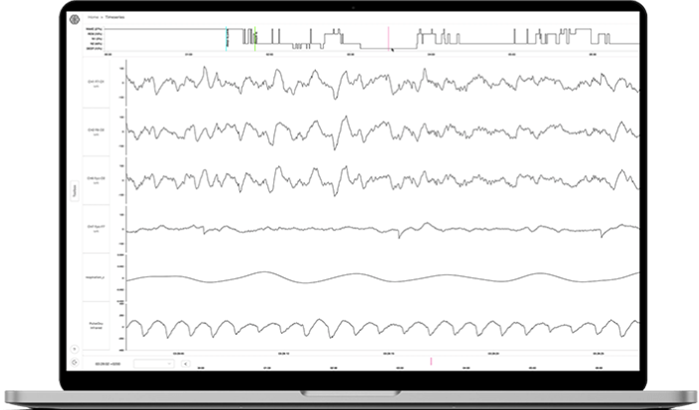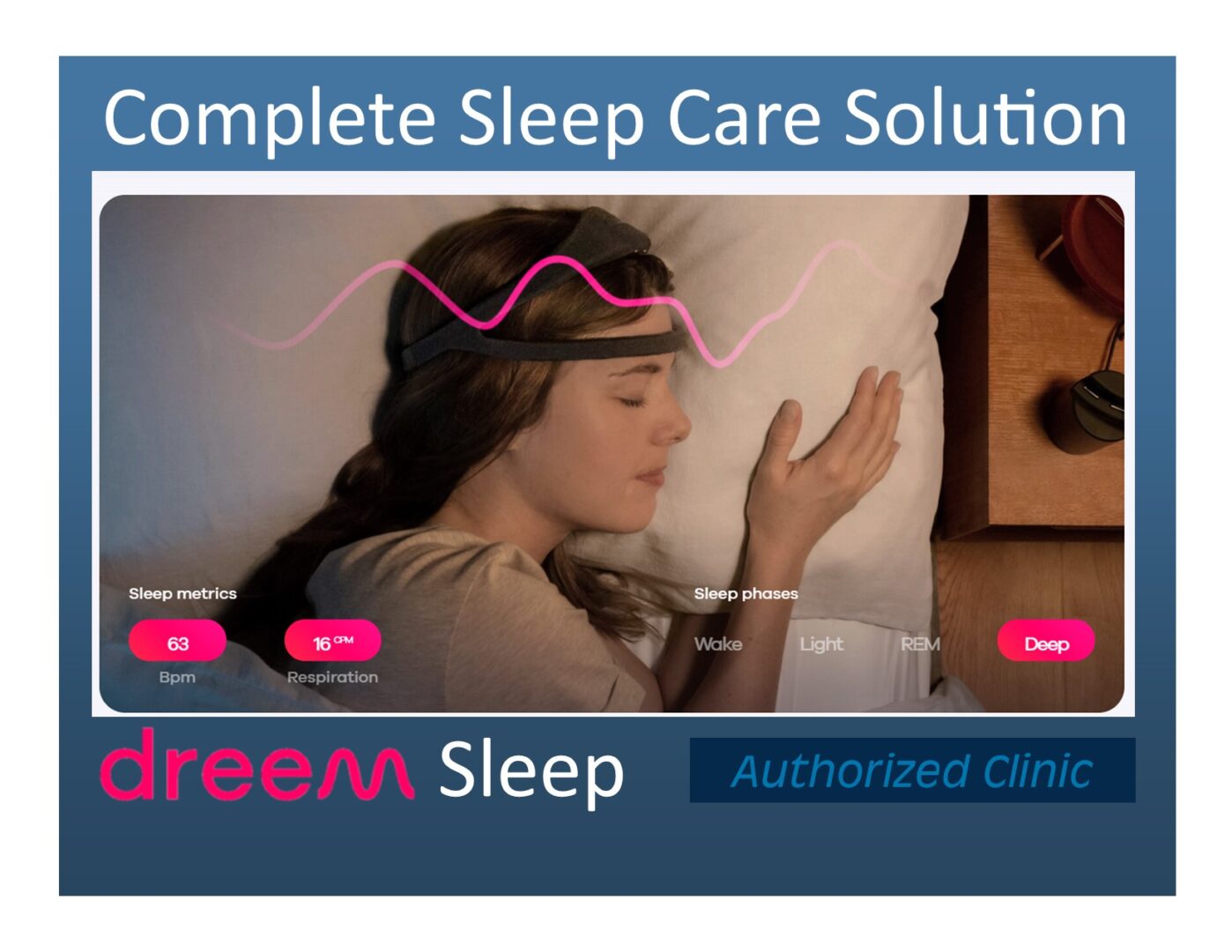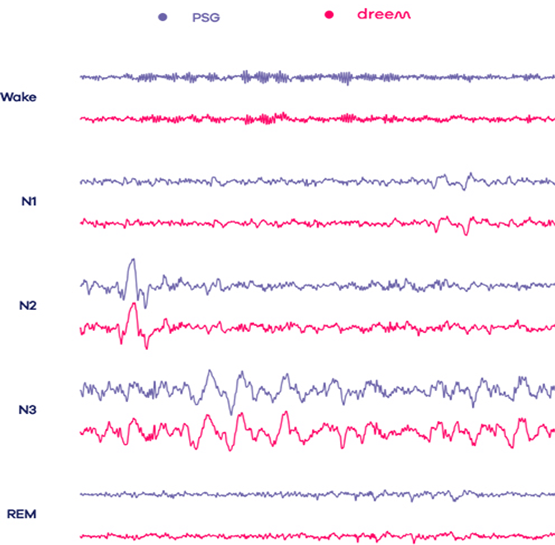Take the stress out of sleep with a clear view of what’s really going on
Get the precision of a sleep center from the comfort of your bed. We collect billions of data points from your brain and body to track how long and how well you sleep, every night. All the personal insights you need to understand and improve your sleep
Understanding Your Sleep

Sleep measurement? It's all about brains
The only way to get a true measurement of your sleep is by monitoring your physiological data brain waves, heart rate, respiratory rate- throughout the night. Dreem is making this possible from the comfort of your own home, the first time this method is available outside of a sleep center.
Sleep endpoints:
- TST, WASO,
- N1 – light sleep, somnolence, drowsy sleep – comprises 5–10 percent of total sleep in adults): This is a stage of sleep that usually occurs between sleep and wakefulness, and sometimes occurs between periods of deeper sleep and periods of REM. The muscles are active, and the eyes roll slowly, opening and closing moderately. The brain transitions from alpha waves having a frequency of 8–13 Hz (common in the awake state) to theta waves having a frequency of 4–7 Hz
- N2, – comprises 45–55 percent of total sleep in adults): In this stage, theta activity is observed and sleepers become gradually harder to awaken; the alpha waves of the previous stage are diminished or disappear and abrupt activity called sleep spindles (or thalamocortical spindles) and K-complexes appear. Sleep spindles range in frequency from 11 to 16 Hz (most commonly 12–14 Hz).
- N3 – deep sleep, slow-wave sleep – comprises 15–25 percent of total sleep in adults): Formerly divided into stages 3 and 4, this stage is called slow-wave sleep (SWS) or deep sleep. SWS is initiated in the preoptic area and consists of delta activity, high amplitude waves at 0-4 Hz. The sleeper is less responsive to the environment; many environmental stimuli no longer produce any reactions. Slow-wave sleep is thought to be the most restful form of sleep. This stage is characterized by the presence of a minimum of 20 percent delta waves ranging from 0.5–2 Hz and having a peak-to-peak amplitude >75 μV. (EEG standards define delta waves to be from 0 to 4 Hz )
- REM REM Sleep – comprises 20–25 percent of total sleep in adults). Known as rapid eye movement (REM) sleep where most muscles are paralyzed, and heart rate, breathing and body temperature become unregulated, the sleeper may dream.
- REM sleep is initiated through acetylcholine secretion and inhibited by neurons that secrete monoamines including serotonin. During this stage, vital signs indicate arousal and oxygen consumption by the brain is higher than during wake. An adult reaches REM approximately every 90 minutes. The exact function of REM sleep is still a bit of a mystery; however, it appears that a lack of it impairs the ability to learn complex tasks. Paralysis from muscular atonia in REM may be necessary to protect organisms from damaging themselves through physical activity.
- SOL, nb and duration of awakenings, Heart Rate, Breathing rate and snoring, Perceived sleep quality


